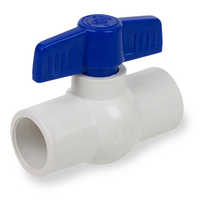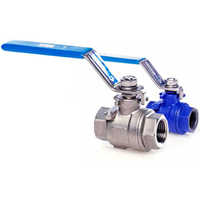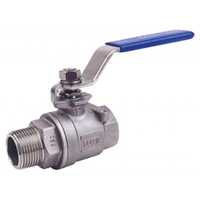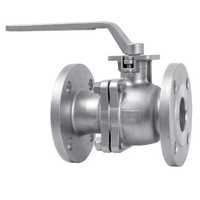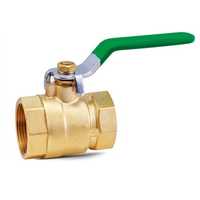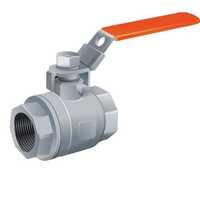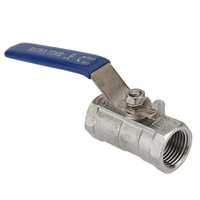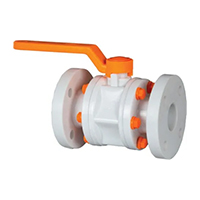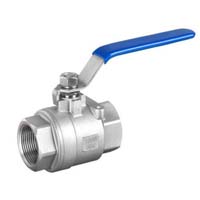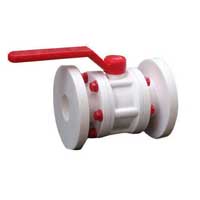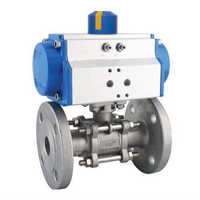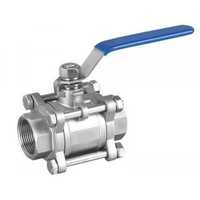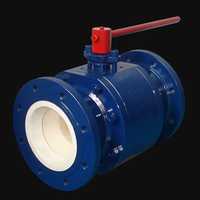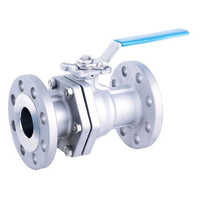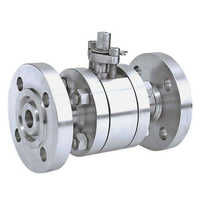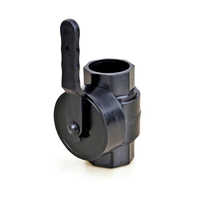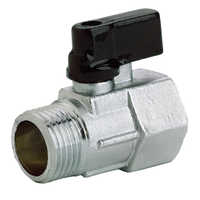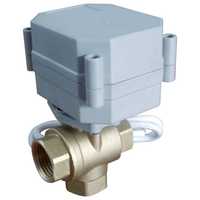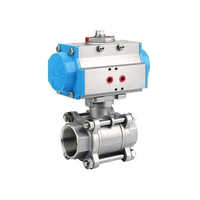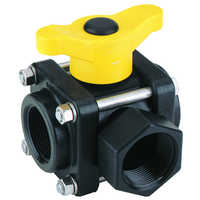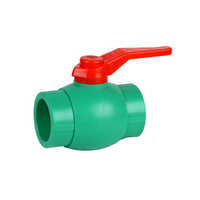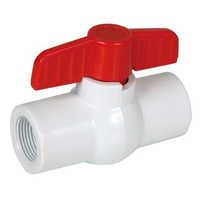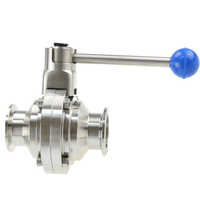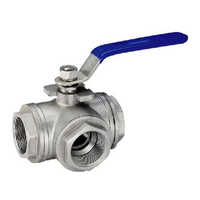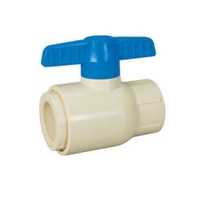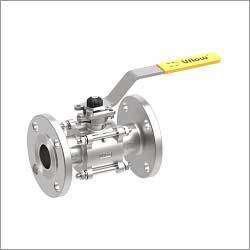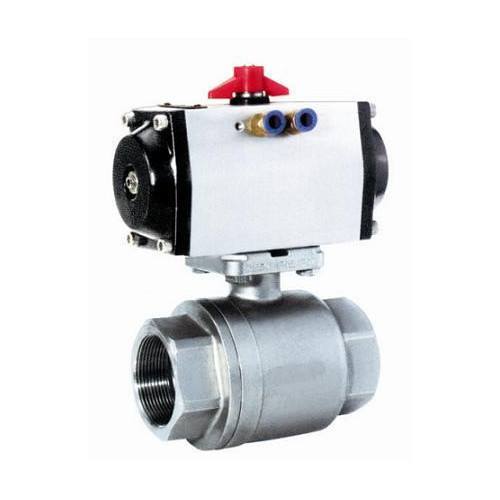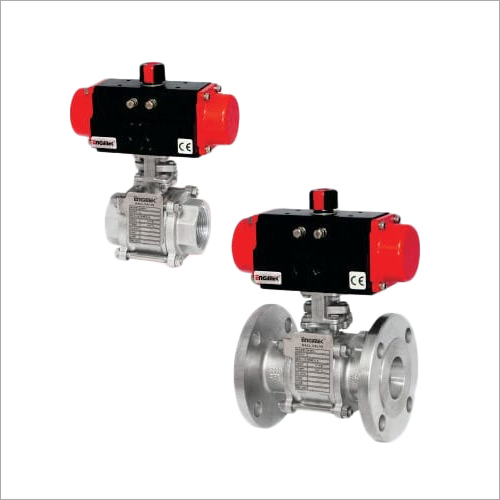Ball Valves
(7627 products)
Top Ball Valves Categories
Explore More Categories
3 Piece Flange End Handle Type Ball Valve Application: All Application
Price Trend: 4000 - 30000 INR (Approx.)/Piece
MOQ- 1000 Piece/Pieces
Color - Silver Black
Structure - Ball
Connection - Flange End
5 Years
Uflow Automation
3 Piece Flange End Pneumatic Operated Ball Valve Application: All Application
Price Trend: 4500 - 40000 INR (Approx.)/Piece
MOQ- 1000 Piece/Pieces
Color - Silver, Black
Pressure - Medium Pressure
Connection - Flange End
5 Years
Uflow Automation
C.S.S. Investment Casting Ball Valve Application: Water
MOQ- 100 , Piece/Pieces
Usage - water, oil , steam
Product Type - VALVES
Width - 100 Meter (m)
21 Years
Amco Industries
Product Showcase
3 Piece Flange End Pneumatic Operated Ball Valve Application: All Application
Price Trend: 4500 - 40000 INR (Approx.)/Piece
MOQ - 1000 Piece/Pieces
Color - Silver, Black
Pressure - Medium Pressure
Connection - Flange End
5 Years
Response Rate: 86.67%
Business Type: Manufacturer | Exporter
UFLOW AUTOMATION
Four Way Ball Valve Application: Air-Conditioning And Plumbing In Buildings
Price: 35000 INR (Approx.)/Number
MOQ - 1 Number
Structure - Ball
Size - 1/2 TO 48 INCH
Color - ANY COLOUR
3 Years
Business Type: Manufacturer | Distributor
JAYANT IMPEX PVT LTD
Made in India
Silver Pharma Triclover Ball Valve
MOQ - 1 Piece/Pieces
Color - Silver
Size - Standard
Usage - Industrial
13 Years
Business Type: Manufacturer | Distributor
VIRAL ENTERPRISE
Made in India
Coated Pneumatic Ball Valve
Price: 600 INR (Approx.)/Piece
MOQ - 1 Piece/Pieces
Usage - To control the flow of liquids and gases
Product Type - Pneumatic Ball Valve
Weight - 5-10 Kilograms (kg)
12 Years
Business Type: Manufacturer | Exporter
PARTH VAlVES AND HOSES LLP
UPVC Solid Ball Valve
Price Trend: 100.00 - 1000.00 INR (Approx.)/Piece
MOQ - 100 Piece/Pieces
21 Years
Business Type: Manufacturer | Exporter
AQUACHEM INDUSTRIES PVT. LTD.
3 Pieces Ball Valve With Pneumatic Rotary Actuator Application: Industrial.
Price Trend: 3000-10000 INR (Approx.)/Piece
MOQ - 01 Piece/Pieces
Structure - Ball
Size - 50 to 600 mm
Product Type - Valve
5 Years
Business Type: Manufacturer | Distributor
ENGIPRO SOLUTIONS LLP
Made in India
Agriculture Pvc Ball Valve Application: Industrial
Price Trend: 50.00 - 2000.00 INR (Approx.)/Piece
MOQ - 1000 Piece/Pieces
Pressure - Medium Pressure
Size - 3/4",1",1,1/4",1 ,1/2",2"
Color - Black
Business Type: Manufacturer | Distributor
CUBIC POLYTECH
Made in India
UPVC Ball Valve
8 Years
Business Type: Manufacturer | Exporter
FITWELL POLYTECHNIK PRIVATE LIMITED
Railway Ball Valve
Price Trend: 900-1200 INR (Approx.)/Piece
MOQ - 100 Piece/Pieces
8 Years
Business Type: Manufacturer | Exporter
Aarko Manufacturing Company
Made in India
High Strength Lever Ball Valve
16 Years
Business Type: Manufacturer | Distributor
WAVIN INDUSTRIES LIMITED
Indian Inquiries Only
Made in India
Polished Flush Bottom Ball Valve
MOQ - 10 Unit/Units
Usage - Industrial
Size - As Per Requirement
Port Size - Customized
1 Years
Business Type: Manufacturer | Exporter
X2 VALVES PRIVATE LIMITED
Made in India
UL FM Rapidrop Test and Drain Valve Assembly
Price: 5000 INR (Approx.)/Number
MOQ - 10 Number
Usage - Industrial Use
Structure - Ball
Color - Brown
7 Years
Business Type: Manufacturer | Exporter
RAPIDROP INDIA
Indian Inquiries Only
Made in India
Flow Indicator - Flange End
Price Trend: 2500-25000 INR (Approx.)/Number
MOQ - 1 Number
17 Years
Business Type: Distributor | Supplier
JAIN PIPE TRADERS PRIVATE LIMITED
Indian Inquiries Only
Made in India
Globe Valve
Price: 500 INR (Approx.)/Unit
MOQ - 100 Unit/Units
Color - Golden
Structure - Ball
Usage - Industrial Use
2 Years
Business Type: Distributor | Trading Company
The Refrigeration House
High Pressure Ball Valve - Color: Silver
Price: 1200 INR (Approx.)/Piece
MOQ - 10 Piece/Pieces
Product Type - High Pressure Ball Valve
Connection - Threaded
Size - 3/8 inch
13 Years
Business Type: Distributor | Exporter
VNM HYDROTEK
Made in India
Plastic Ball Valves
2 Years
Business Type: Manufacturer | Distributor
BROTHERS PLAST TECH PRIVATE LIMITED
Made in India
Welded Ball Valve
Price: 1000 INR (Approx.)/Number
MOQ - 1 Number
3 Years
Business Type: Manufacturer | Distributor
WELD ARC ENGINEERS
Manual Ss304 Ball Valve
Price Trend: 2500.00 - 3000.00 INR (Approx.)/Piece
MOQ - 3 Piece/Pieces
Type - BALL VALVE
Material - SS304
Capacity - 15NB -65NB Milliliter (ML)
9 Years
Business Type: Manufacturer | Exporter
SS ENGINEERS AND CONSULTANTS PRIVATE LIMITED
Made in India
Industrial Pneumatic Ball Valve
4 Years
Business Type: Manufacturer | Exporter
AIRCON PNEUMATICS
Pp Agriculture Ball Valve Application: Industrial
Price: 325 INR (Approx.)/Unit
MOQ - 50 Unit/Units
Color - Black
Pressure - Medium Pressure
Product Type - Ball Valve
3 Years
Business Type: Manufacturer | Distributor
PARSHWA INDUSTRIES
Made in India
GURU Ball Valves
3 Years
Business Type: Trading Company
GURU MARKETING
Indian Inquiries Only
Investment Casting Ball Valve Application: Industrial
Price: 1000 INR (Approx.)/Piece
MOQ - 20 Piece/Pieces
Pressure - Medium Pressure PSI
Structure - Ball
Color - Gray
8 Years
Response Rate: 80.65%
Business Type: Manufacturer | Exporter
BHAGYALAXMI ENGINEERING WORKS
Made in India
0.5 To 2 Inch Astm D2467 Schedule 80 Manual White Red Plastic Upvc Ball Valve Application: Plumbing
Price: 48.7 INR (Approx.)/Piece
Structure - Ball
Pressure - High, Medium, Low, Other
Product Type - Ball Valve
2 Years
Business Type: Manufacturer | Supplier
KARAN POLYMERS PVT. LTD.
3 Way Ball Valve
Price Trend: 2500.00 - 7500.00 INR (Approx.)/Unit
MOQ - 1 Unit/Units
15 Years
Business Type: Manufacturer | Exporter
INTEGRAL PROCESS CONTROLS INDIA PVT. LTD.
Made in India
Brass Vertical Check Valve - Application: Industrial
Price: 175 INR (Approx.)/Piece
MOQ - 1 Piece/Pieces
Color - Golden
Structure - Other, Check
Product Type - Brass Vertical Check Valve
7 Years
Business Type: Manufacturer | Supplier
WINGRIP PLAST PVT. LTD.
Made in India
Manual Flanged End Connection Type Stainless Steel Ball Valve 15 mm to 150 mm
Product Type - Metal Ball Valve
Size - 1/2"-10"DIA
Structure - Ball
1 Years
Business Type: Manufacturer | Distributor
PARMAR STEEL
Made in India
Trunnion Mounted Ball Valve
Price Trend: 25000.00 - 30000.00 INR (Approx.)/Unit
MOQ - 01 Unit/Units
5 Years
Response Rate: 84.48%
Business Type: Manufacturer | Distributor
SQK VALVES FITTINGS & AUTOMATION PRIVATE LIMITED
Made in India
Pvdf Ball Valve Port Size: 1" To 4"
Price: 4500 INR (Approx.)/Piece
MOQ - 1 Piece/Pieces
Color - WHITE
Size - 1" to 4"
Usage - Highly Temp and Abrasive Material Handling
7 Years
Response Rate: 70.37%
Business Type: Manufacturer | Supplier
NPE PUMPS PRIVATE LIMITED
Ball Valves Manufacturers | Suppliers in India
| Company Name | Location | Member Since |
|---|---|---|
| Aquachem Industries Pvt. Ltd. | Ahmedabad, India | 21 Years |
| Jain Pipe Traders Private Limited | Gurugram, India | 17 Years |
| Wavin Industries Limited | Gwalior, India | 16 Years |
| Integral Process Controls India Pvt. Ltd. | Pune, India | 15 Years |
| Viral Enterprise | Valsad, India | 13 Years |
| Vnm Hydrotek | Mumbai, India | 13 Years |
| Parth Valves And Hoses Llp | Pune, India | 12 Years |
| Ss Engineers And Consultants Private Limited | Rajahmundry, India | 9 Years |
| Fitwell Polytechnik Private Limited | Rajkot, India | 8 Years |
| Aarko Manufacturing Company | Jalandhar, India | 8 Years |
Ball Valve: Components, Types & Specifications
A ball valve, also known as a globe valve, is a type of gate valve in which a rotatable ball inside a bore is used to regulate the flow of a liquid or gas. By turning the ball a quarter revolution (90 degrees) around its axis, the medium can flow through or is blocked.
They have a long lifespan and maintain a tight seal throughout that time, even if the valve is not around for a while. As a result, they are more useful as a shut-off valve therefore for example the gate valve. If you're trying to decide between a gate valve and a ball valve, read our in-depth comparison article. Ball valves are more resistant to polluted media than most other kinds of valves.
Components of Ball Valve
1. Valve Body
This is the heart of the valve, housing the mechanical parts that allow you to turn it on and off.
2. Rotary Ball
The ball is built with a center bore (hole) that the media flows through. Turning the stem alters the trajectory of the ball.
3. Stem
This is the link between the ball and the outside controller. For example, in a mechanical ball valve the stem is attached to a handle or lever.
3. Seats
In between the human and the ball are these discs. The seats not only support the ball but also act as a seal between the two.
3. Power Source
The ball valve stem can be turned by hand or by an actuator. Manual actuation encompasses levers and knobs that are manipulated by an operator. In addition to manual operation, automated power sources like electric, pneumatic, and hydraulic actuation are also accessible.
4. Packing
This is a seal from around the stem that stops the media from leaving.
5. Bonnet
The packing and stem are housed in the bonnet of the body.
General Types of Ball Valves
1. Forged ball valves
To manufacture forged ball valves, the alloys and metals necessary for their construction are shaped while they are still in their solid state. Heating the metals and alloys, or using industrial-sized equipment that provide compressive stresses to the material in order to bend it, are the two methods that are used to bend it.
Ball valves that have been forged are preferable for use in industrial applications because they can withstand higher temperatures, pressures, and other challenging circumstances. Forged ball valves can be made out of a variety of materials, including brass and stainless steel, among others.
A die forging machine is used during the manufacturing process to heat the metal (or alloy), compress it, bend it, and shape it according to the design of the ball valve. All of these steps are performed in order.
2. Vented Ball valves
When it comes to their overall design, normal 2-way ball valves and vented Ball Valves are essentially identical in appearance to one another.
The most important distinction is that the output port is open to the atmosphere even when it is in the closed position. This is accomplished by drilling a small hole into the ball as well as into the body of the valve.
When the valve is closed, the holes align themselves with the port for the outlet, which results in the pressure being released.
This is especially helpful in compressed air systems, as depressurization creates a more secure working environment than the previous option. The small venting holes gives these valves the appearance of being 2-way ball valves, but in reality, they are 3-way valves that can also be used as 2-way valves.
3. Flanged Ball Valves
The sort of connection that flanged ball valves have is what distinguishes them. Flanges, which are typically designed in accordance with a given standard, are used to make the connection between the ports and the piping system.
Due to the fact that these valves often feature a full-bore design, they are able to give a high flow rate. When choosing a flanged ball valve, it's important to consider both the pressure rating and the flange pressure rating, which indicates the extreme load that can be handled by this connection.
These ball valves can be manufactured with two, three, or four ports, and they come with an ISO top in addition to having all of the other features that are typical of a quarter-turn ball valve.
Stainless steel, steel, or cast iron are the most common materials used in their construction.
4. Hydraulic ball Valves
Steel or stainless steel may be used in the construction of these valves. Hydraulic valves are suited for high operating pressure not only because of these materials, but also because of the seats. The seats of these valves are constructed out of polyoxymethylene (POM), a material that is suited for use in situations involving both high pressure and low temperature.
The maximum temperature of hydraulic ball valves can reach up to 80 degrees Celsius, while the maximum operating pressure of these valves can exceed 500 bars.
5. Standard (Threaded)
The housing, seats, ball, and the lever that rotates the ball are the components that make up a standard ball valve. They come with valves that have two, three, and even four ports, and their threading can be female, male, or a combination of the two.
The most common valve design, threaded valves come in a wide range of variations, such as miniature ball valves, slanted ball valves, ISO-top ball injectors, strainer/bleed point integration, and more.
They offer a wide variety of choices and have a large operational range that encompasses both pressure and temperature.
Specifications of Ball Valves
1. One Piece Ball Valves Specifications
Features:
| Oil, Gas type substance and Water |
| Female NPT |
| Blow-Out Proof |
| Handle Equipped with locking device |
| Reduced Bore Ball Valve |
| Teflon (PTFE) |
Material:
- Stainless Steel
- Teflon
Dimensions:
It is the thread size that determines the size of the ball valve that must be used. Ball Valves with a 1-1/2-inch thread pitch are commonly used.
2. Two Piece Ball Valve Specifications
Features:
| Gas, Oil and Water |
| Blow-out Proof |
| Female NPT |
| PTFE (Teflon) |
| Handle Equipped with locking device |
| Full Bore Ball Valve |
Material:
- Stainless Steel 316
- Teflon (PTFE)
Dimensions:
Generally speaking, a ball valve of 2 inches in diameter will be needed for a 2 inch pipe, etc.
The installation of these threaded ball valves is tool-free.
3. Three Piece Ball Valve Specifications
Features:
| Gas, Oil and Water |
| Female NPT |
| Blow-Out Proof |
| Teflon (PTFE) |
| Full Bore Ball Valve |
| Handle Equipped with locking device |
Materials:
- Stainless Steel 316
-Teflon (PTFE)
Dimensions:
This valve has a three-piece body assembled with nuts, bolts, and pipe nipples.
The ball valve is located in the middle area between two threaded pieces.
Easy access is provided without having to unscrew the entire ball valve by just removing the central section.
4. Three-Way Ball Valve Specifications
Features:
| Gas, Oil and Water |
| Blow-Out Proof |
| Reduced Bore Ball Valve |
| Teflon (PTFE) |
| Handle Equipped with locking device |
| Female NPT |
Materials:
- Teflon (PTFE)
- Stainless Steel 304
Dimensions:
It may look like there are more parts to these valves than there actually are because there are three caps attached to each port end, but the body is still comprised of a single piece.
Therefore, they are limited in the size of balls they can accommodate compared to the 2 Piece and 3 Piece.
Their ID (internal diameter) is thus less than that of a full port, however, it is not as small as that of a standard port or a reduced port.
One-piece ball valves of the same size don't compare to the ID on this valve.
FAQs: Ball Valve
Q. What are the characteristics of a ball valve?
Ans. There are a few distinguishing characteristics of a ball valve:
- There isn't a lower stem, which reduces building costs.
- Only a few sizes to choose from, ranging from half an inch to twelve inches.
- Sealing efficiency enhanced by ball on the seat
- Torque requirements are minimal
Q. What is the main function of a ball valve?
Ans. A hollow, perforated, and swiveling ball is used to regulate the flow of fluid through a ball valve.
Q. How to choose a ball valve?
Ans. Here are the tips:
- Consider the controlling method
- Valve Function
- Type requirement
- Consider Valve component
- Performance
- Budget
Q. How does the ball valve work?
Ans. A ball valve is a type of shutoff valve in which a rotary ball within a bore is used to regulate the flow of a liquid or gas through the valve. To open or close the ball's passageway, simply rotate it 90 degrees around its axis.
Related Blog:
- Best Ball Valves Manufacturers, Suppliers & Exporters in India
Related Categories
Abrasives
Acoustic Products
Acrylic Sheets
Air Blowers
Air Compressors & Air Separation Plants
Air Cooler
Air Dryers
Air Receiver
Air Valves
Aluminum Castings
Anchors
Anti Vibration Mounts
Ball & Roller Bearings
Ball Valves
Ballast Making Machines
Bearing Parts & Components
Bearings
Bellows & Expansion Joints
Belt Pulleys
Boilers, Components & Spares
Bolts
Bright Bars
Bristles
Burners/Industrial Burners & Incinerators
Bushings & Bushing Parts
Butterfly Valves
CNC Machined Components
Cable Pulleys
Capital Goods
Carbon & Graphite Products
Castor Wheels
Centrifugal Pumps
Centrifuges
Ceramics
Chains & Chain Link Fence Fittings
Cleaning Equipment
Clips, Clamps
Coils
Combustion Equipment
Compression Springs
Compressors & Allied Equipment
Control Valves
Conveyor & Conveyor/Industrial Belts
Cooling Tower & Chilling Plants
Corrosion Protection Materials
Coupling
Cranes
Cryogenic Equipment
Cutting Tools, Broaches & Cutters
Departmental Shelving
Diaphragm Valves
Die Castings
Dies & Moulds
Dies,Jigs,Fixtures
Diesel Engine & Electric Locomotive Spares
Draught Fan
EOT Cranes
Electric Hoists
Electric Motors & Engines
Electroplating Chemicals & Equipment
Elevators, Lifts & Escalators
Energy Management System
Engine Valves
Engineering Goods & Equipment
Engineering Plastics
Engraving Equipment
Extruded Profiles
Fasteners
Fiberglass Products
Filter Cartridges & Media
Filter Cloth, Filter Industrial
Filters-Air, Gas, Liquid
Filtration & Sedimentation Units
Flat Metal Processing Equipment
Float Valves
Fork Lift Truck Parts
Fork Lift Trucks
Forklifts
Foundry Raw Material & Equipment
Furnace Manufacturers
Galvanized Fasteners
Gantry Cranes
Gaskets
Gate Valves
Gauges & Gauge Glasses
Gear Boxes, Reduction Gears & Gear Cutting
Girder Cranes
Glass & Glass Products
Glass Cutting Tools/Glass Cutters
Globe Valves
Goliath Cranes
Grating
Hand & Allied Tools
Hand Pump
Hardware & Tools
Heat Exchangers
Heating Elements
Hex Bolts
Hex Nuts
Hooks & Mounts
Hoses
Hot Air Oven
Humidification & Ventilation Equipment
Hydraulic Hoses & Flexible Metal
Hydraulic Press
Hydraulic Press Brakes
Hydraulic Products & Equipment
Hydraulic Valves
Induction Heating Equipment
Industrial Automation
Industrial Brakes
Industrial Brushes
Industrial Clothing
Industrial Clutches
Industrial Cylinders
Industrial Dryers
Industrial Evaporators
Industrial Knives
Industrial Nets
Industrial Ovens
Industrial Rollers
Industrial Supplies Stocks
Industrial Supplies-General
Industrial Tape
Industrial Tools
Industrial Valves
Industrial Vibrator
Inspection Equipment
Instrumentation
Internal Combustion Engine
Jib Cranes
Laboratory Furniture
Laboratory Glassware & Equipment
Laundry Equipment
Lined Valves
Machine Tools Accessories
Marking Systems
Material Handling Equipment
Measuring Tools & Equipment
Mechanical Seals
Metallised Capacitor Films
Mining Equipment
Mining, Exploration & Drilling Machinery
Model Making Materials
Motor Couplings
Moulded Components
Moulds
Needle Valves
Needles
Nuts
Oil Seals
Outdoor Cooling Systems
Overhead Cranes
PVC Hoses
PVC Products
Paint Brushes
Painting Equipments & Maintenance
Perforated Sheets
Plastic Processing Machinery Parts
Plastic Valves
Plastic Welding Equipment
Plate Valves
Plug Valves
Pneumatic Products & Tools
Pneumatic Valves
Polish & Polishing Material/Machinery
Power Press
Precision Brass Components
Pressed Components
Pressure Gauges
Pressure Vessels
Pulleys
Pulverizers
Pump Spares Parts
Pumps & Pumping Equipment
Radiators
Refrigeration & Equipment
Rope Pulleys
Rope,Twines & Webbings
Ropes
Rotary Valves
Rubber & Rubber Products
Rubber Gaskets
Rubber Roller
Rubber Seals
Rubber Transmission Belts
Screws
Seals
Sensors & Transducers
Shaft Couplings
Shafts & Shaft Collars
Sheet Metal Components & Parts
Solenoid Valves
Springs
Stainless Steel Bolts
Stainless Steel Fasteners
Stainless Steel Nuts
Stainless Steel Valves
Storage Systems
Storage Tanks
Submersible Pumps
Surface Finishing Equipment
Synthetic Industrial Diamonds
Testing & Measuring Equipment
Thermostatic Bimetals & Thermostats
Trolleys & Carts
Tungsten Carbide
Ultrasonic Equipment
V-Belts
Vacuum Equipment & System
Valves
Valves Fittings
Vibrating Screen
Washers
Water Coolers
Weighbridge
Welding & Soldering Supplies
Welding Electrodes
Welding Equipment
Winches
Wire Drawing Dies
Wire Rope Hoists
Wire Ropes
